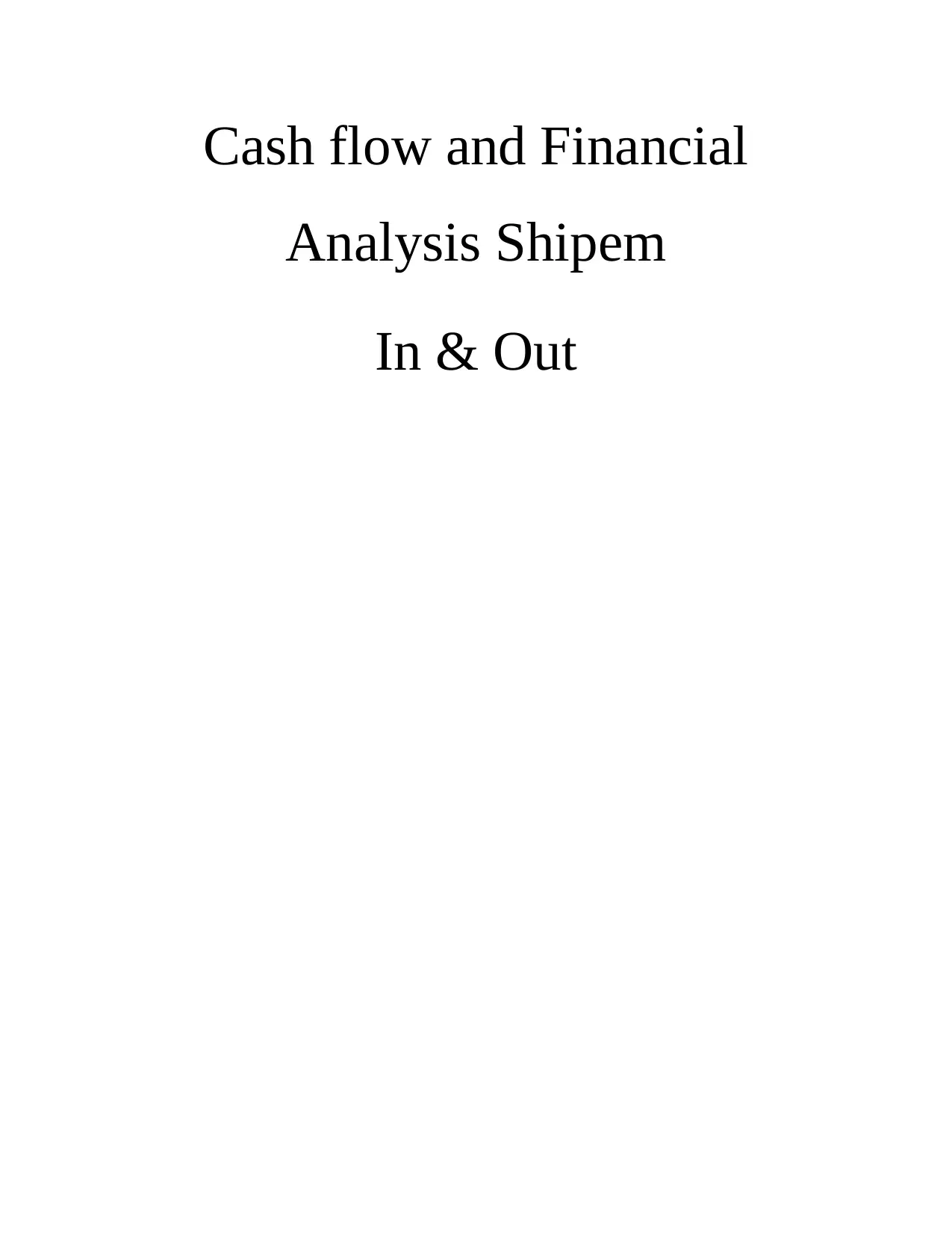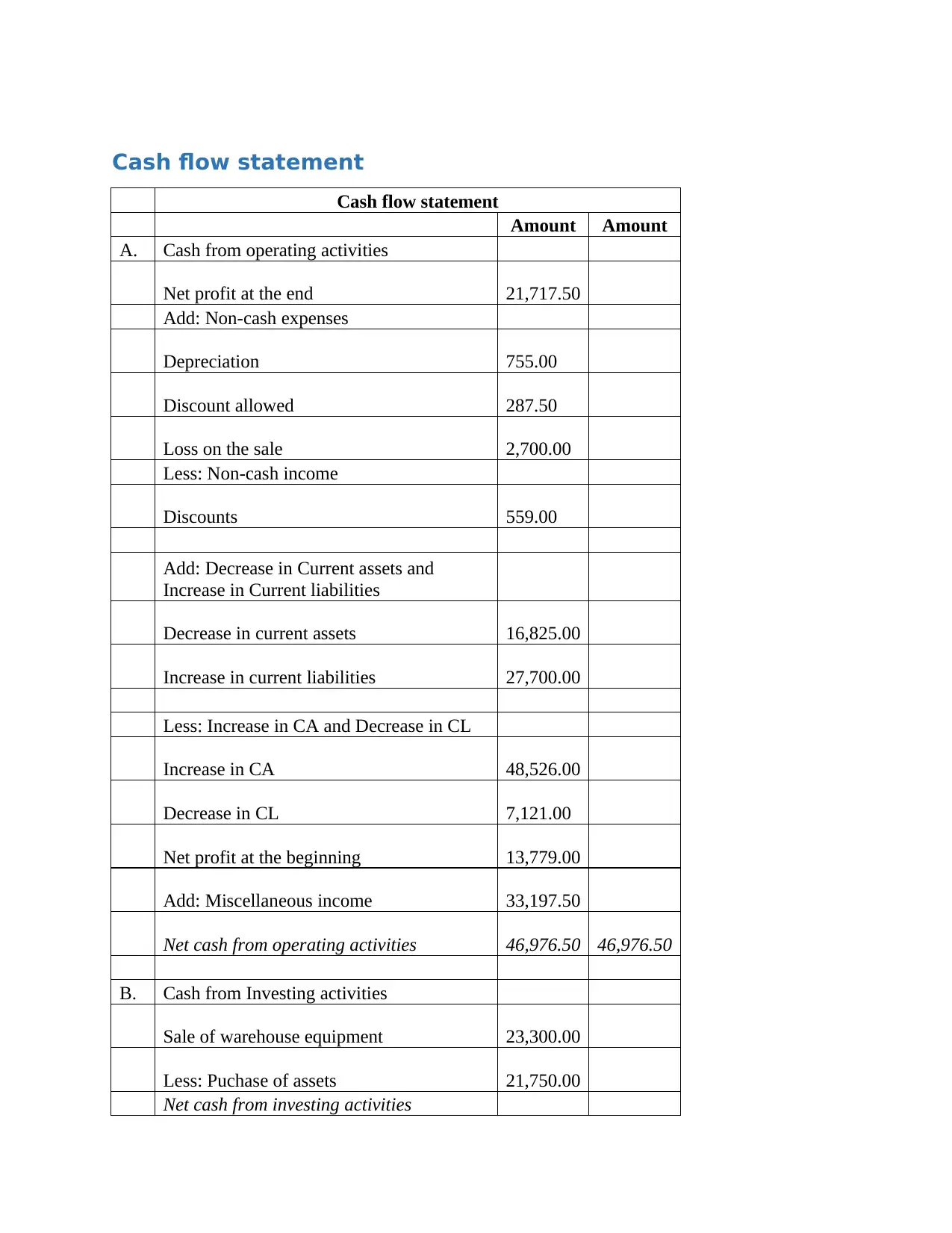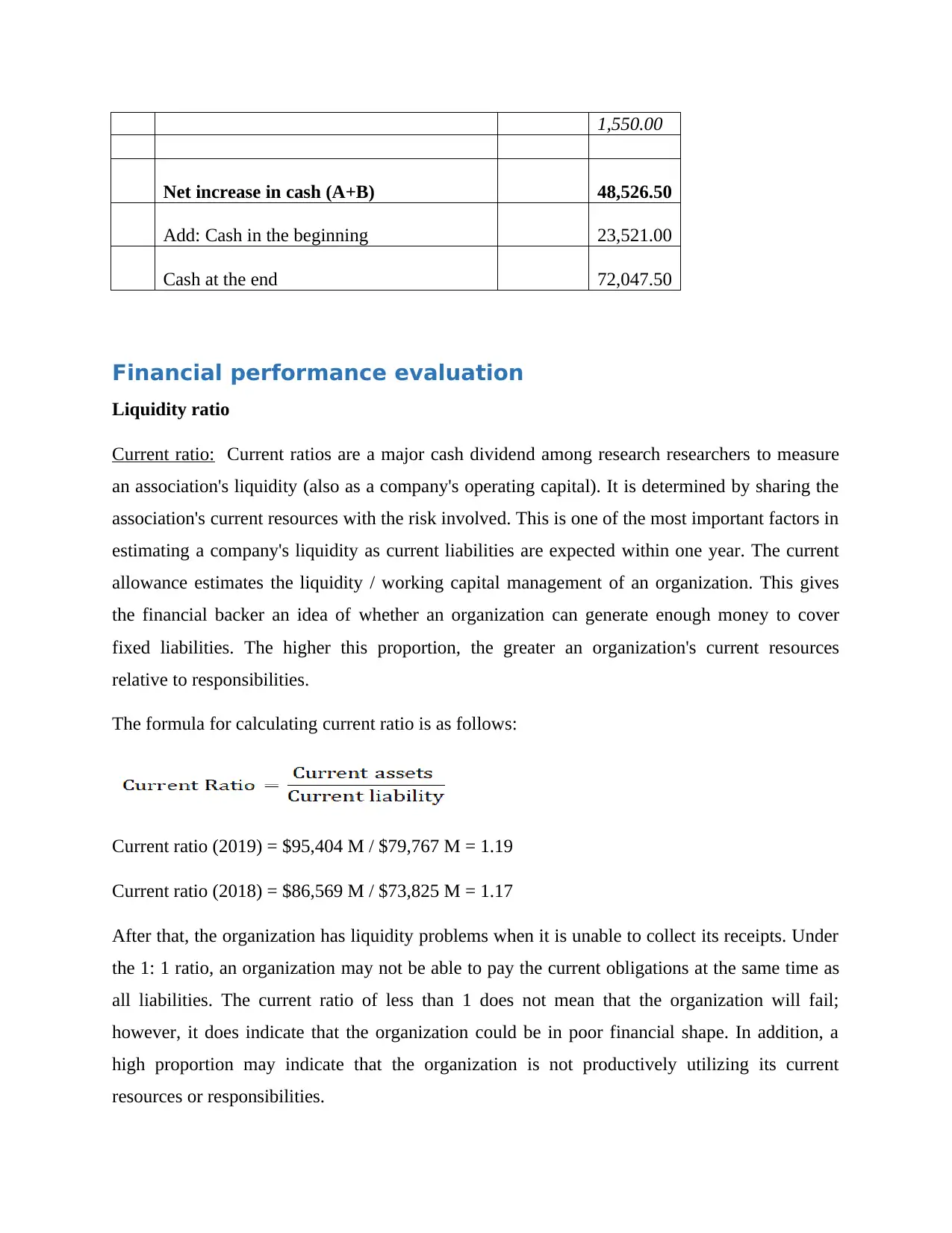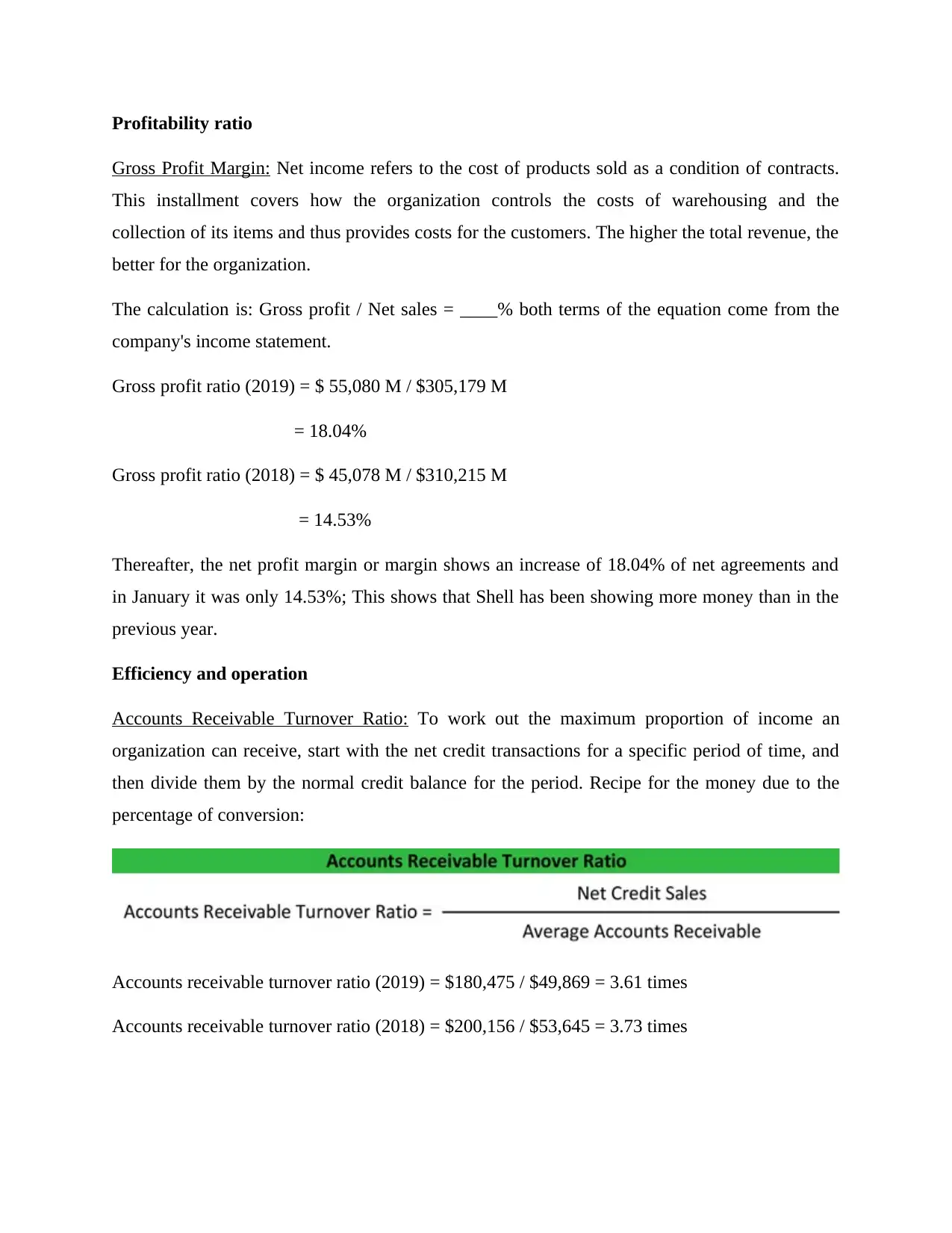Ship'emIn&Out: Cash Flow Statement and Financial Analysis Report
VerifiedAdded on 2022/11/29
|4
|653
|199
Report
AI Summary
This report presents a cash flow statement and financial analysis for Ship'emIn&Out, a wholesale business specializing in electronic equipment. The analysis includes the preparation of a cash flow statement, followed by an evaluation of the company's financial position using key financial ratios. The cash flow statement details cash from operating, investing, and financing activities. The financial analysis focuses on liquidity ratios (current ratio), profitability ratios (gross profit margin), and efficiency ratios (accounts receivable turnover ratio) to assess the company's performance and financial health. The report provides calculations and interpretations of these ratios for the years 2018 and 2019, highlighting trends and insights into the company's financial management. The report is based on the provided trial balance data and aims to provide a comprehensive overview of Ship'emIn&Out's financial performance.
1 out of 4











![[object Object]](/_next/static/media/star-bottom.7253800d.svg)